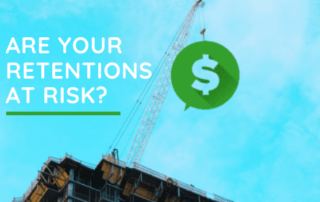Blog
The Key To Converting Customers to ‘Buy New’? Think Like a Car Brand
Like it or not, the construction industry is now in an era of disclosure and consumer transparency. And unless iCIRT ratings become mandatory, the industry urgently needs to fix the ‘customer relationship’. Yes, we said customer.
Building 1.2 Million Homes: A Growing Concern
Demand for apartment living is rising fast in Australia, driven by rapid immigration growth and house values reaching an affordability ceiling. With the Federal government’s ambitious plan to build 1.2 million homes over five years, the obvious solution is to ‘build up’, not out. And where there is a will, there is a way, particularly as reportedly apartment values are already rising faster than houses in 50pc of all suburbs, according to the Australian Financial Review (AFR). “Australia’s chronically undersupplied housing market Read more
Master The Complexity of Construction Back Charging
Navigating the intricate financial landscape of construction projects requires a keen understanding of various mechanisms, and among them, the 'right to set off' clause, or 'back charging' as it’s commonly known, plays a pivotal role. Deciphering Construction Back Charging 1. Definition: Construction back charging is a strategic process involving the transfer of costs incurred by one party in a construction project back to another responsible party. This method ensures that the party accountable for a specific cost bears its financial implications. 2. Read more
Proactive Warranty Period Management Strategies
If you’re a progressive builder or developer, you know that warranty periods in construction projects are a pivotal aspect, often overlooked in the industry’s management strategies. However, savvy businesses are increasingly realising the substantial benefits of proactive warranty period management. Beyond just being a contractual obligation, the effective handling of warranty periods can significantly enhance a company's reputation, financial stability, and client relationships. Strategies For Successful Warranty Period Management Thorough Documentation: Maintaining and enabling easy access to meticulous records of project details, Read more
7 Business Benefits of DLP Manager
What does it take to grow a successful construction business in 2024? You need a customer-first approach to driving customer satisfaction, positive word-of-mouth and profitable growth. As the leaders in post construction management, we know that your brand reputation is built after construction is finished - when customer critique is at its highest, and so are legal challenges. DLP Manager is a game-changer and the only customer-first platform - designed by builders. Customers have a responsive system at their fingertips - where Read more
2024: A Customer-First Approach For Construction Businesses
For construction businesses, 2024 should be the year of CX. A customer-first approach delivers good ‘CX’ – meaning everything an organisation does to deliver superior experiences. And to do this, you need to focus on your customer journey. But why should construction businesses care? After all, when the project is delivered to spec, you’re done, right? Wrong. The customer journey is at its most critical during the 2 to 10 year warranty period, when customer critiquing is at its highest. According to Read more
Case Study & Independent Cost Benefit Analysis
By Chris Polin, Founder & CEO of DLP Manager. There are a lot of claims around the efficiencies of software and what they can do for a business. DLP Manager was born out of my firsthand experience and frustration in managing the handover to owners, also known as the Defect Liability Period. In fact, initially, I built a system and online platform to fix my own problem, as a full-time builder and construction manager. In the process of using the system I Read more
Why Post Construction Is More Important Than You Think
Why Post Construction Is More Important Than You Think There are three distinct phases of construction: Pre Construction, Construction and Post Construction. According to Procore, these phases have distinct drivers, with subcontractors playing a key role in driving outcomes during the pre-construction and construction phases. Upon practical completion, construction enters the Post Construction phase where the customer / owner is in the driver’s seat during the handover phase. This is where DLP Manager comes in. Typically, the DLP is mismanaged and this Read more
Construction can win or lose in the most customer-facing phase
The construction industry has a big problem with defects. With the standard post construction Defects Liability Period being 12 months to 10 years, owners can report the smallest defect to major structural defects. How can the industry manage this period more efficiently?
Startup Daily Interviews Chris Polin, Founder of DLP Manager
The construction industry has a big problem with defects. With the standard post construction Defects Liability Period being 12 months to 10 years, owners can report the smallest defect to major structural defects. How can the industry manage this period more efficiently?
Digital construction is transforming how the industry manages the Defects Liability Period
The construction industry has a big problem with defects. With the standard post construction Defects Liability Period being 12 months to 10 years, owners can report the smallest defect to major structural defects. How can the industry manage this period more efficiently?
Are Your Retentions At Risk?
Post the construction boom, profit margins for builders and developers have come back down to earth, slimmer than ever. Developers and builders are looking at ways they can more profitably grow in 2021, and the spotlight is shining on areas previously overlooked. But there’s a new opportunity cost in town, and it’s called Retentions. Tied to the Defects Liability Period (DLP), these monies sit in the balance sheets of many of the major builders in Australia – and can amount to several hundred million dollars. If anything should prevent release of retentions, it can have a serious impact on the bottom line, growth, and even survival of the company.
Reputation: The new risk in the construction industry
The construction boom and an increase in high profile construction failures has raised the question, "are all builders created equal?" The construction industry It has also triggered a raft of new legislation which provides powerful new consumer protection. The Duty of Care law enacted this year enables owners a guaranteed period after construction is completed, to report major defects and fairly wide reaching powers to have them resolved.
How the construction industry can emerge stronger post COVID-19
The construction boom triggered many changes. Buildings went up faster, using sub optimal materials occasionally, and the industry bore the brunt of this. Cladding and major defects became a legal battlefield, testing the reputations of builders and developers. The industry is now facing the economic fallout of the COVID-19 crisis, magnifying the housing cost and affordability issue. At the same time, there may be a saviour on the rise, in the form of digitisation, powered by an innovative start-up community who are exploring and exploiting opportunities to disrupt the industry by bringing new technologies to the industry.















